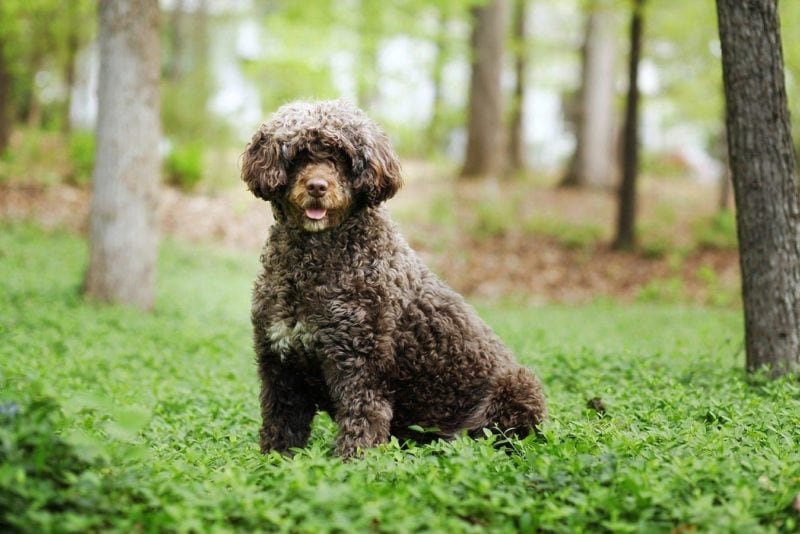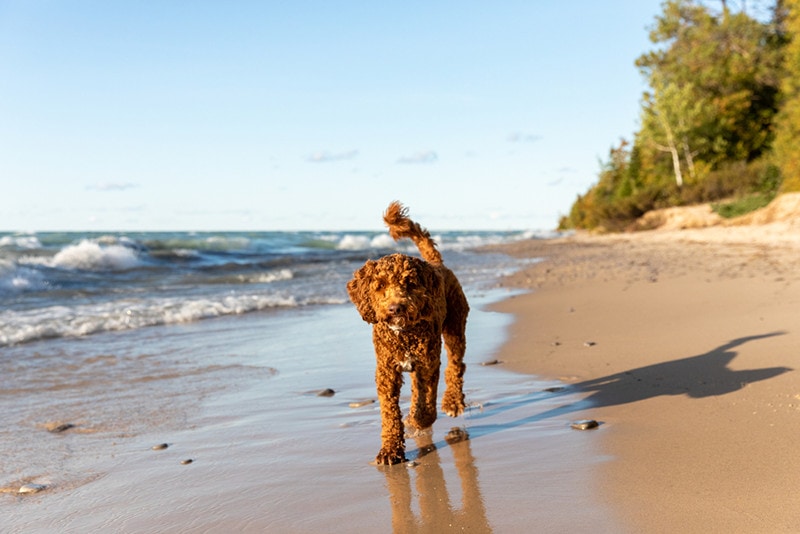What Were Rottweilers Bred For? Breed History Explained

Updated on
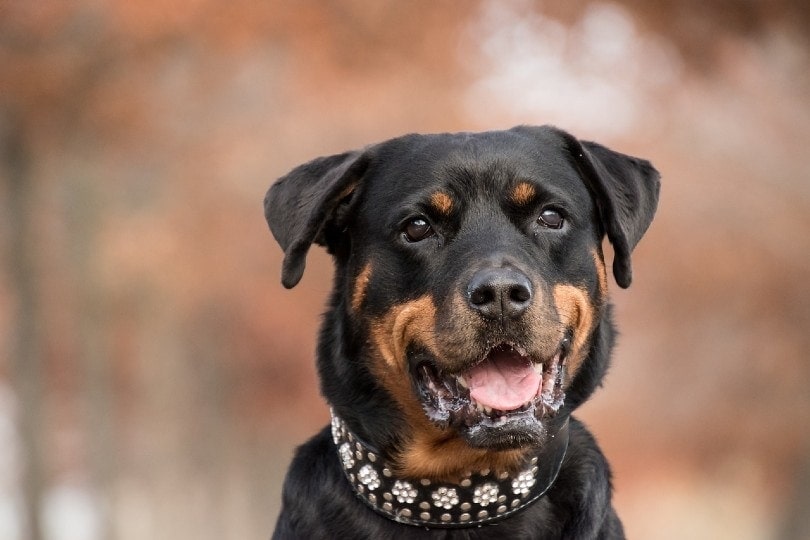
The Rottweiler—pronounced ‘Rott-vile-er’—is a distinct-looking breed. Even someone who is only a little familiar with different dog breeds will likely recognize a Rottweiler. Their unique black and brown coloration stands out in the crowd.
No standard for Rottweiler breeds existed before 1901 when the International Club created the breed standard for Leonbergers and Rottweiler Dogs. However, the earliest traces of the breed goes back to 73 or 74 AD as cattle dogs for the Roman Empire.
Since their beginnings as herd dogs, Rottweilers have had several jobs such as cart pulling, guarding, and law enforcement. Below, we will look at the Rottweilers’ incredible and varied history.
Tracing the Roots of Rottweilers
During the Roman occupation of Switzerland and Southern Germany, they brought a dog who guarded their herds. Later on, in the Middle Ages, people began using Rottweilers as bear-hunting dogs because of the brute strength bred into them for guarding cattle.
There were several Sennehund breeds of dogs in these regions, such as the Bernese Mountain Dog or the Appenzeller. These dogs would likely have interbred with the Rottweilers. Aside from the white on the chest, the modern Rottweiler has a lot of similarities to the Sennehund breeds.
Because of their incredible intelligence, Rottweilers have been bred for many purposes through the years. Rottweilers are the 9th most intelligent dog breed, stressing the importance of good training. A dog as big and powerful as a Rottweiler must be under control and be trained for whatever task they have.
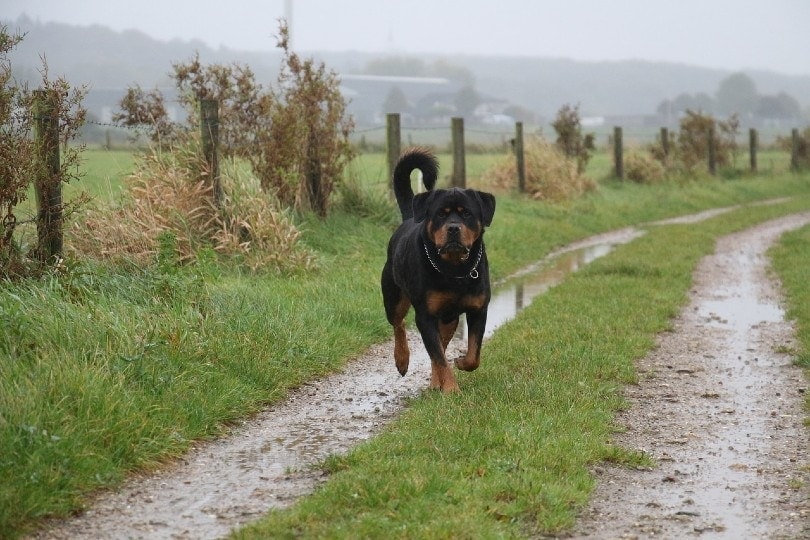
Herd Dog
Before they were even recognized as a breed, the Rottweiler was a herding dog. Their purpose was to protect the cattle and sheep from predators such as wolves and bears at night and help round them up. This job led to them being used heavily as hunting dogs into the middle ages.
Cart Pulling
During the dawn of the 19th century in Europe, cattle herding was prohibited. This left the Rottweiler without a job. You may have heard of a Rottweiler being called a butcher’s dog. That name came from their new job: pulling butcher’s carts in Rottweil, Germany.
During this part of this dog’s history, they became known as “Rottweilers.” Before that, they would have just been Roman drover dogs. When they became butcher’s dogs, they were called Rottweil Butcher’s dogs and finally became simply known as Rottweilers.
After this, it wasn’t until 1931 that the Rottweiler was finally accepted as an official breed by the American Kennel Club.
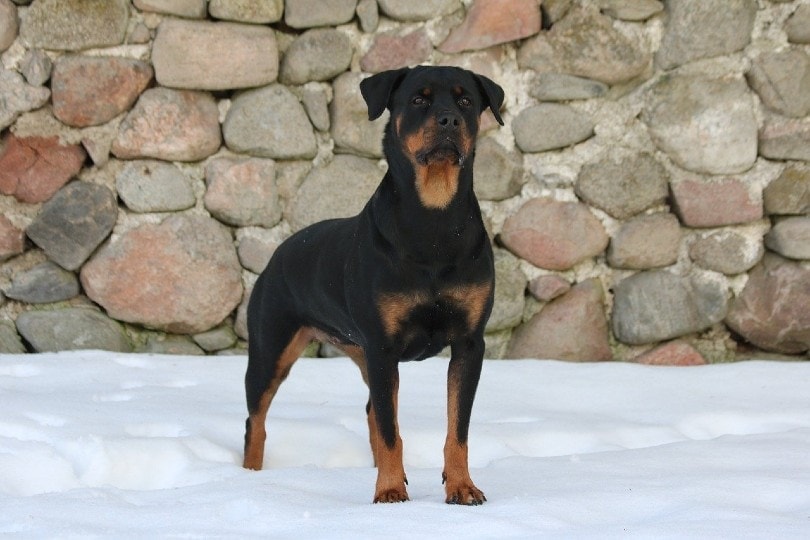
Guard Dogs and Law Enforcement
As time went on, Rottweiler jobs became more varied. Because their roots were firmly planted in cattle herding, it was a natural progression to being trained as guard dogs. The Rottweiler was responsible for guarding people and money.
This guard training then progressed even further. Most people automatically associate law enforcement dogs with a German Shepherd. However, the Rottweiler was one of the first dogs used by the police.
In modern times, it’s rare to see a Rottweiler as a police dog anymore—hence the automatic association with Shepherd for the role.
- They have an aggressive and reactive nature, and while they can be trained, it’s not uncommon for instinct to take control.
- They have a relatively short lifespan of 8–10 years which is not ideal for law enforcement applications because of the massive amount of time and resources that get sunk into training them.
Modern Rottweiler
While they don’t look like the cuddliest dogs in the world, the Rottweiler has been in the top 10 most popular dog breeds for the last 9 years, according to the American Kennel Club. So, there’s no denying that these dogs make wonderful pets.
Because of their innate desire to protect their families and home, a Rottweiler is often used as a family guard dog. However, they must receive proper obedience training and socialization. This is even more important again if there are small children in the family.
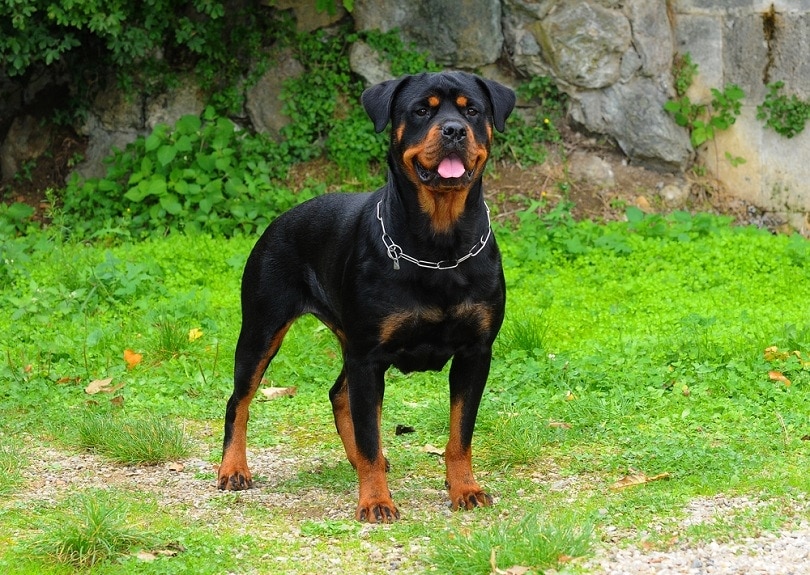
Owning a Rottweiler
Their history is long and interesting, but it hasn’t been without its problems. Many people are scared of even the sight of a Rottweiler. They are perceived as aggressive and volatile dogs. Some countries and jurisdictions even have laws against Rottweiler ownership.
It’s true; they are bred for aggression which can lead to problems. However, if a Rottweiler receives adequate training and their owner is a strong leader who treats them well, they have the potential to be an incredible family dog.
Should Everyone Own a Rottweiler?
Even though Rottweilers consistently rank high on lists of popular breeds does not mean they are the right fit for everyone. For example, if you’ve never owned a dog before, a Rottweiler is not ideal due to its training and leadership needs.
That being said, if you’re willing to put in the time and effort into training and socializing a Rottweiler, they make fierce companions.
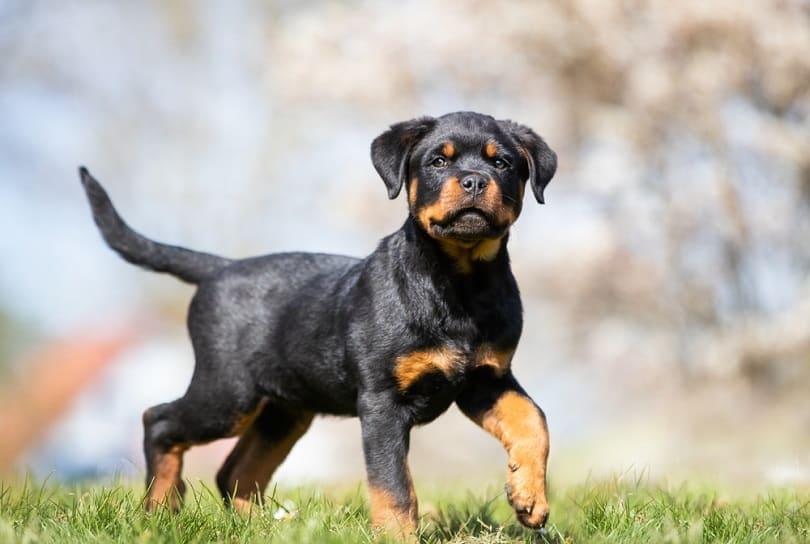
FAQ
Why are Rottweiler tails often docked?
At one point, cutting off—or docking—a Rottweiler’s tail served a purpose. It was done to prevent it from getting caught or injured while working. However, today it’s done primarily as a “looks” thing. It’s a very hot topic among some groups of people. Thankfully, it’s becoming more common to see Rottweilers with their tails in modern times.
Are female or male Rottweilers more protective?
It depends on what type of protection you’re looking for. A male Rottweiler tends to be much more aggressive and territorial. So, they make excellent guard dogs. A female still makes a great guard dog because they are so protective, but they are typically a bit smaller and easier to housetrain.
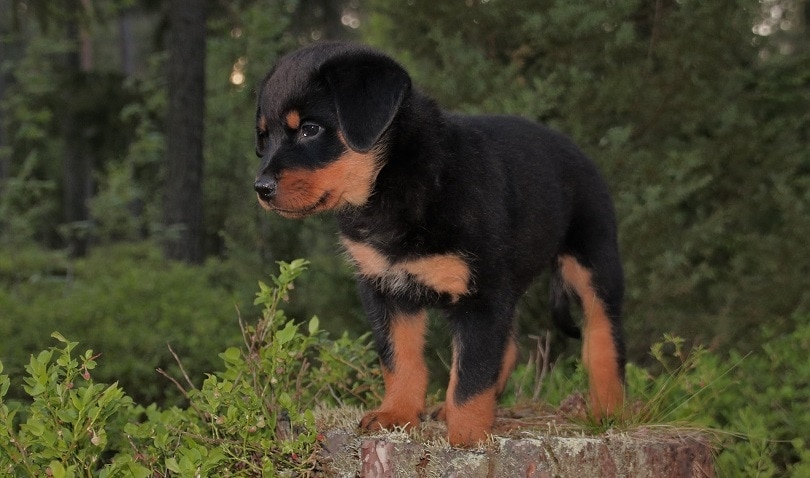
Are Rottweilers high-maintenance?
As far as grooming is concerned, Rottweilers are relatively low-maintenance because of their shorter coats. However, concerning training and socialization, they are very high-maintenance. To thrive, they must be well-trained and socialized with other dogs. If not, they have the tendency to become overly aggressive, which can lead to problems.
Final Thoughts
The biggest downside of the Rottweiler is the negative attention they receive. The worst part about it is the perceived danger they are. At the end of the day, it doesn’t matter what breed we are talking about—it’s only as good as its training.
We hope that this dive into the history of the Rottweiler has shed a positive light on this incredible and intelligent breed. Not only are they amazing working dogs, but they have the potential to be a wonderful addition to the family.
Related reads:
Featured Image Credit: Rebecca Scholz, Pixabay



